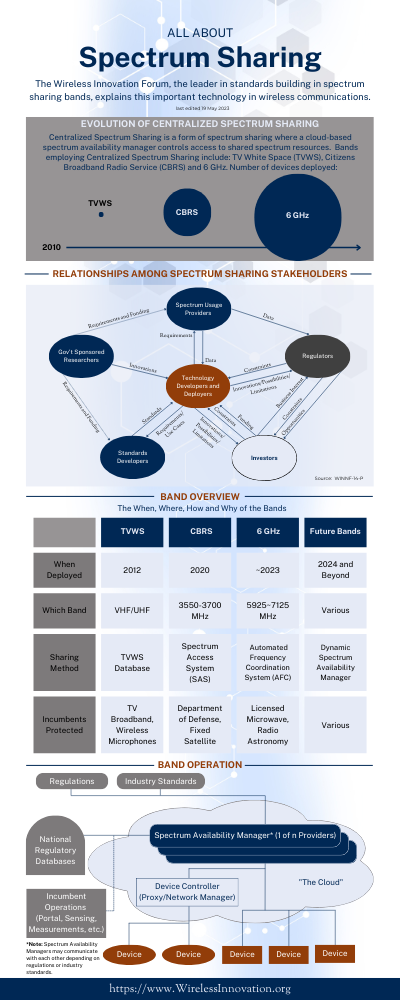- Home
- Knowledge Center
- Reports, Recommendations and Specifications
- Information Documents
- All About Spectrum Sharing Infographic
- Free Webinars
- Tech Talks
- Setting the Standard Video Blog
- Beyond the Radio Dial Video Blog
- Conference Proceedings
- Workshop Proceedings
- Springer Journals
- Market Studies
- What is the SCA?
- Issue Submissions
- Reference Implementations
- What is SDR?
- What are CR and DSA?
- About Us
- Events
- News
- Projects & Committees
- Members
- Join the Forum
Wireless Innovation Forum Top Ten Most Wanted InnovationsInnovation #2: Advanced Interference Mitigation Techniques2.1 Executive SummaryImproved mechanisms are required to reduce intrusive and destructive interference to communications signals and circuits. Improved and applied interference mitigation and cancellation techniques may be utilized to improve quality of service, range, spectrum efficiency and spectrum re-use if properly implemented. Interference reduction and mitigation techniques continue to mature for a subset of communications systems including military and some commercial applications. Development of interference rejection systems that are realizable in consumer communications devices including broadband consumer handsets and base sites, land mobile narrowband and broadband systems including public safety and mission critical applications, and other cost and size-conscious systems are needed. 2.2 Application Interference can take multiple forms. Some common forms are 1) intentional jamming, as often occurs in military communications or as a denial of service attack to existing systems, 2) unintentional or non-intentional interference, often resulting from misuse of equipment (wrong frequency settings including operation outside of authorized bands, exceeding necessary or licensed power levels, etc.), equipment failure / degradation, or emission spillover from OOBE in other bands, or 3) collisions of like waveforms such as those that occur in unscheduled or collision-sensed environments (ex: Wi-Fi), and 4) dissimilar or disparate waveforms vying for use of identical spectrum allocations such as in ISM, unlicensed, and lightly licensed bands. In all cases, the resulting interference acts to decrease the signal to interference plus noise ratio at the receiving end of the communications path and, if of sufficient level, will act to degrade quality of service or deny service entirely. This can range from impaired or obliterated voice quality degraded data fidelity, or complete denial of data throughput. 2.3 Description Innovations are sought that deal with how Software Defined Radio (SDR) and/or Cognitive Radio (CR) might alter the system design tradeoffs either to enable better rejection of interference without the exponential cost growth associated with more traditional solutions. Such innovations might include, but not limited to, the ones listed below. It is realized that many of these techniques are already used in some advanced communications systems, but not used in others because of design tradeoffs such as the implementation cost of such techniques would be prohibitive for many applications or other factors necessary for their deployment. It is recognized that CR techniques, whereby the frequency plans could be modified to operate in non-interfering bands, might be a solution but spectrum availability or operating frequency range of the radio may be cost prohibitive. Significant cost/implement size of current techniques as well as new techniques are being sought. Examples of potential research categories applicable to interference mitigation are given below.
|



